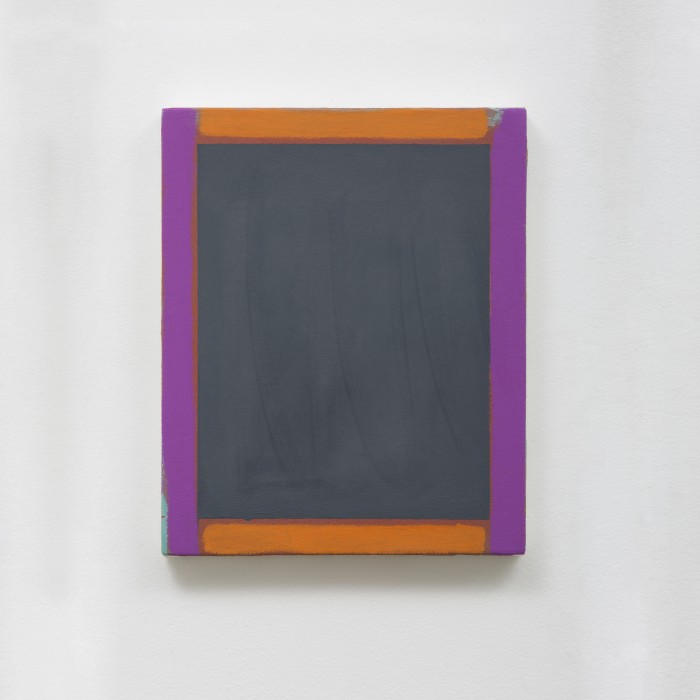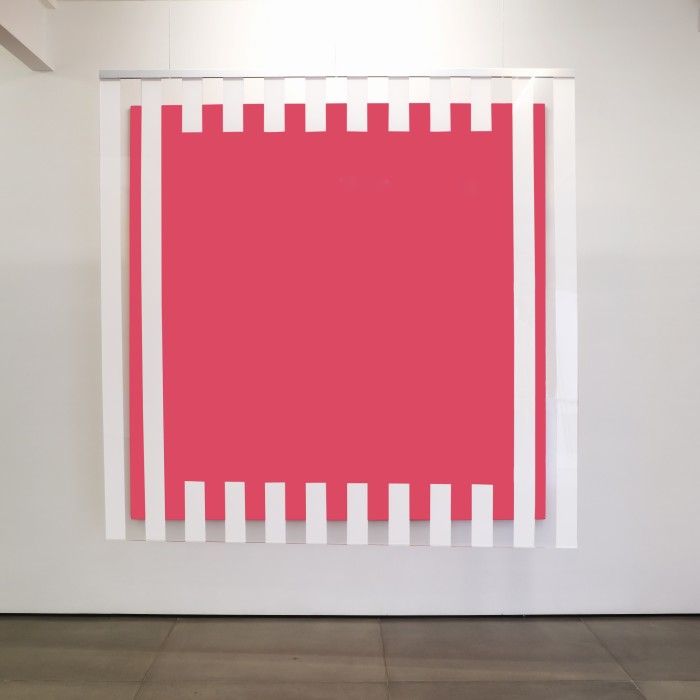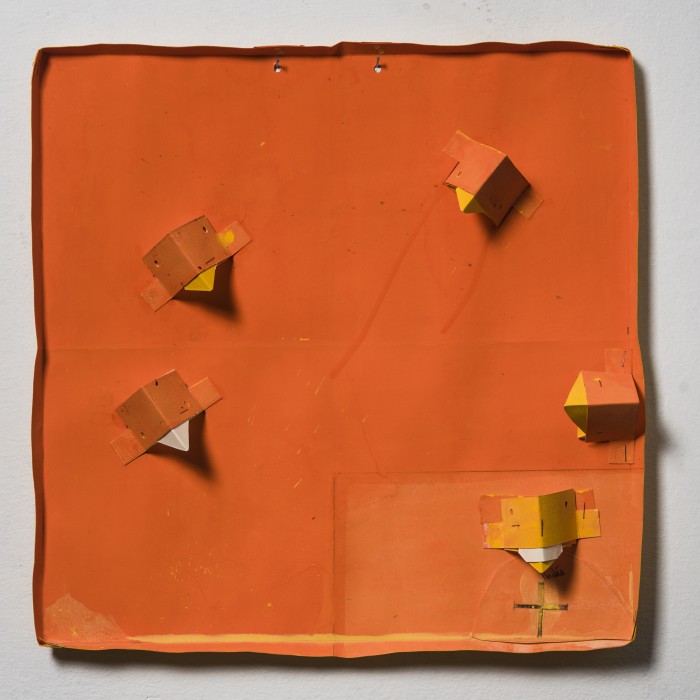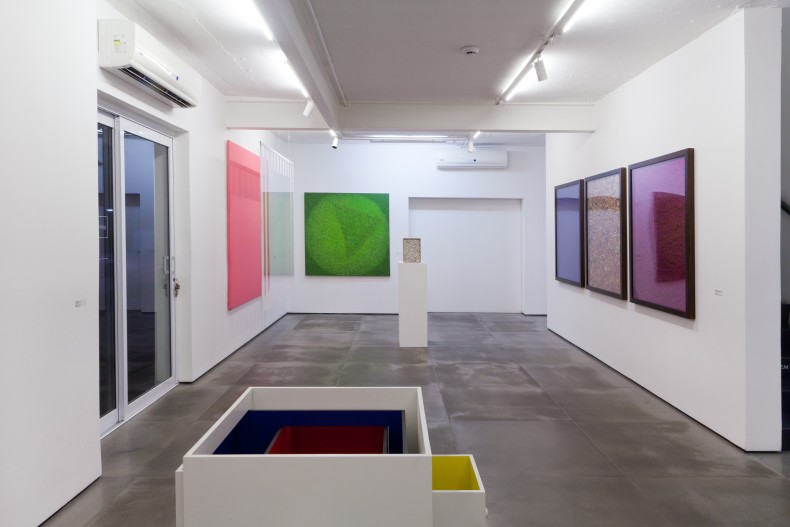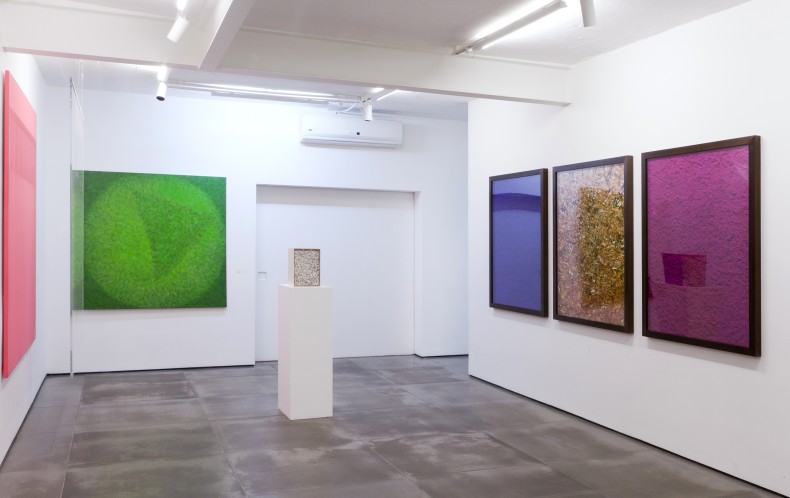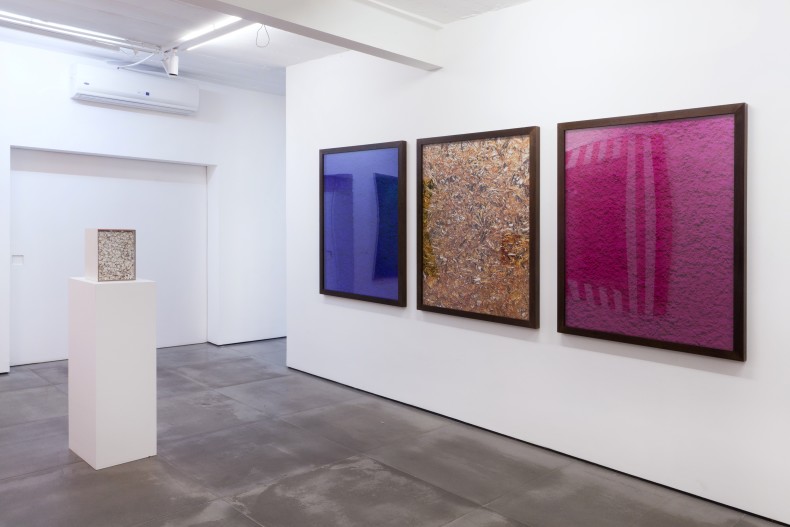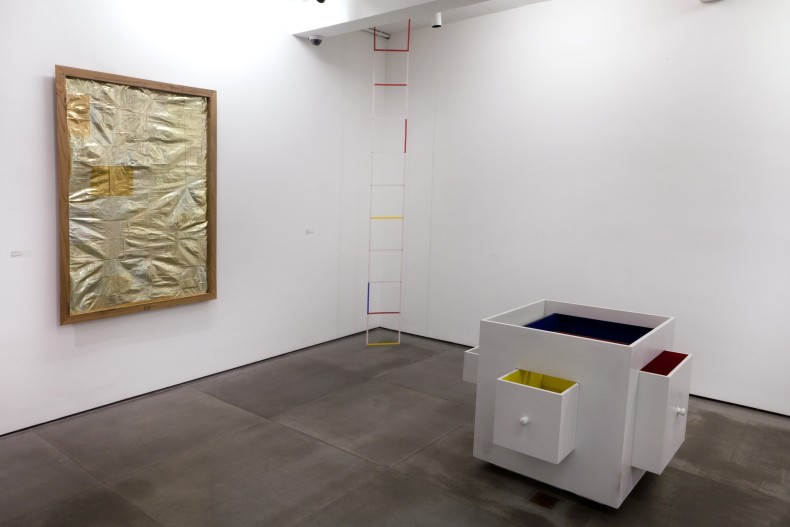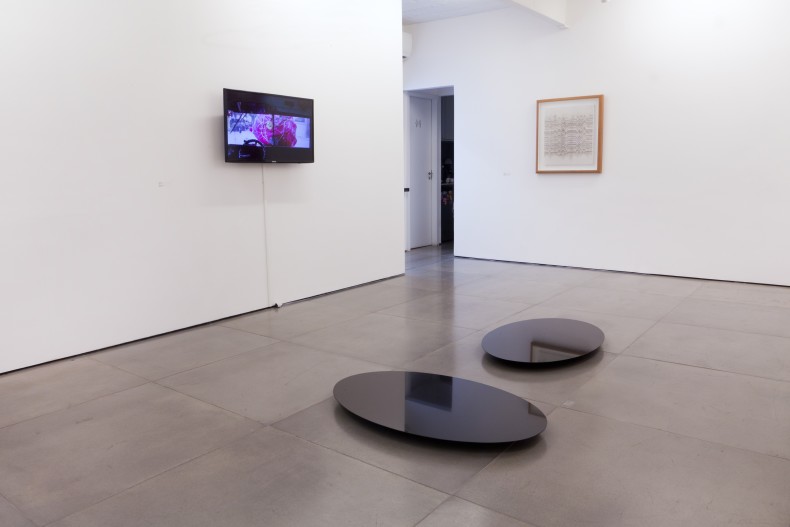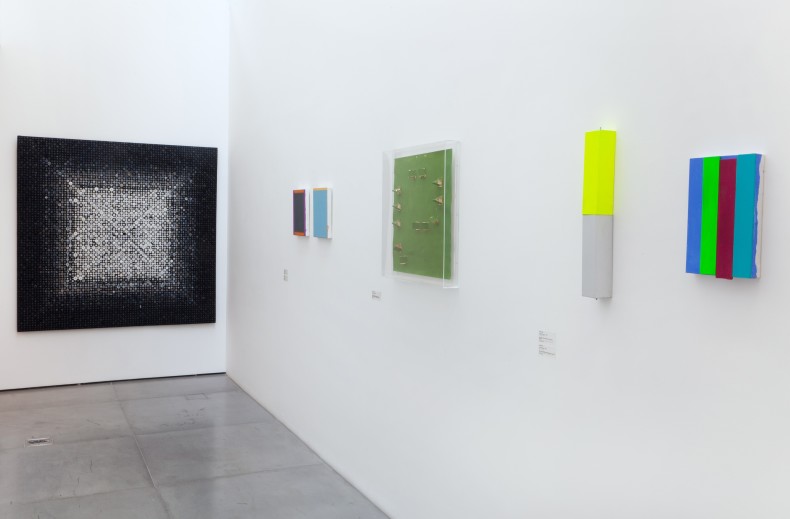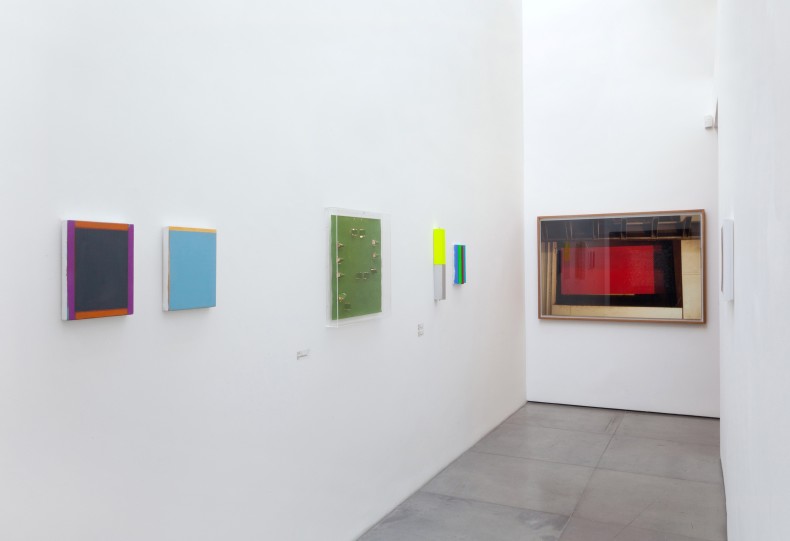Continuing her exploration of color and this hypothetical battle between the color chart and the color circle, Galeria Nara Roesler’s artistic director Alexandra Garcia Waldman, presents the second part of the group exhibition Chromophilia vs. Cromophobia: Continues, now at the Rio venue. The show, which first part took place in São Paulo, features 23 pieces by the artists Abraham Palatnik, Angelo Venosa, Antonio Dias, Artur Lescher, Bruno Dunley, Carlito Carvalhosa, Daniel Buren, Eduardo Coimbra, Hélio Oiticica, José Patrício, Karin Lambrecht, Laura Vinci, Marcelo Silveira, Marco Maggi, Melanie Smith, Milton Machado, Rodolpho Parigi, Sergio Sister, Tomie Ohtake, Vik Muniz and Virgínia de Medeiros.
Building on the theoretical base of the essay Chromophilia from David Batchelor’s book Chromophobia, the exhibition features contemporary artists who play, destroy, and revel in the tension between post-1960’s use of industrial color and the advent of the color chart. Batchelor describes the color chart as a disposable list of readymade color. “Each strip of paper is a perfect abstract painting in miniature, or a compact example of color serialism, or one page of a vast catalogue raisonné of monochromes.” The chart gave artists freedom and autonomy in their use of color, previously unimaginable within the rigid structure established by the color circle. As he states: “the color circle establishes relationships between colors and implies an almost Feudal hierarchy among colors – primaries, secondaries and tertiaries, the pure and the less pure.”
The artists on view greet viewers with the full spectrum of the color drama. Daniel Buren rejected the idea that eliminating color would produce a purer form of art; on the contrary, he deems color is essential and irreplaceable by words or action. Rodolpho Parigi weaves up explosive colors into flat geometrical shapes, in compositions that evoke fragmented, semi-abstract urban landscapes. In turn, Vik Muniz, whose oeuvre relates to the perception and representation of images of the world, explores nothing but the power of color this time around, as he works with a monochrome painting by the household artist Yves Klein.
Whereas Eduardo Coimbra and Marco Maggi use color to build unique geometries, Artur Lescher introduces it as an element in his formal sculpture. On the other hand, Sérgio Sister and Bruno Dunley reframe classical canvas-as-window notions as they look into the intricate relationship that arises when colors interact with space and air.
Other two-dimensional works by José Patrício and Marcelo Silveira verge on kinetic art, with color and material creating a degree of illusion to the eye, and Karin Lambrecht’s paintings outline landscapes through a vibrant monochromatism – unlike Carlito Carvalhosa, whose organic drawings contrast with the use of a single, pale shade, and the soft hues of Antonio Dias’ designs. For his part, Angelo Venosa incorporates color into his structures, which investigate the insides of bodies.
The artists on show challenge viewers to experience color. They have materialized color in order to attain freedom of experimentation, leaving behind the stiffness of the color circle.
